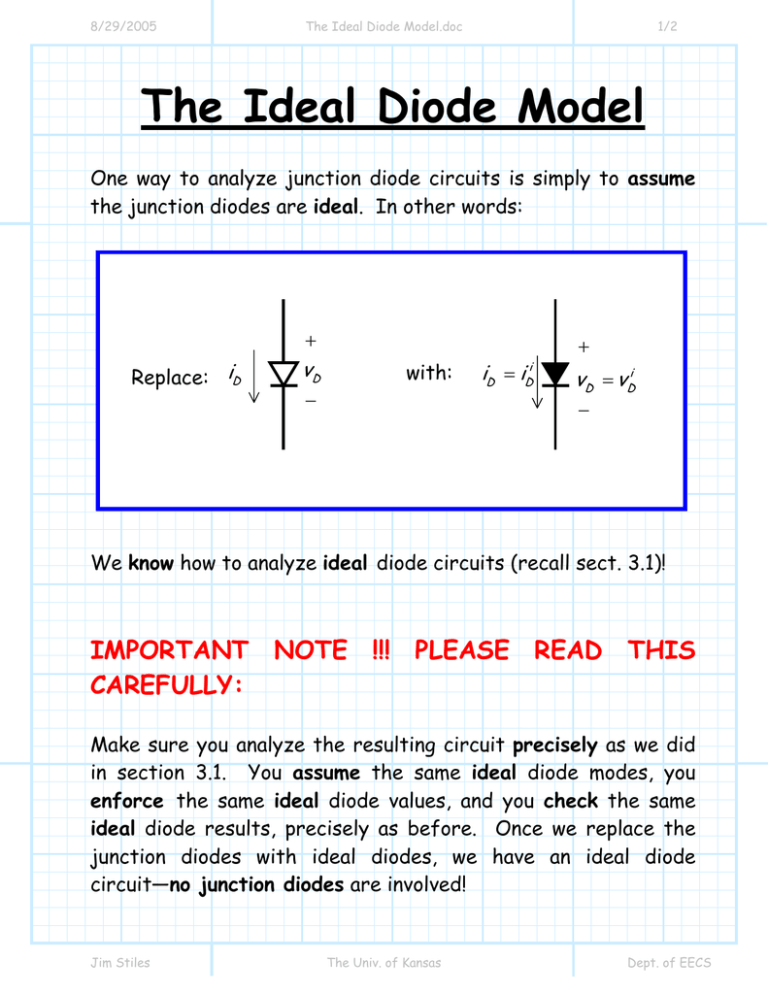The Ideal Diode Model
advertisement

8/29/2005 The Ideal Diode Model.doc 1/2 The Ideal Diode Model One way to analyze junction diode circuits is simply to assume the junction diodes are ideal. In other words: + Replace: iD vD with: − iD = i i D + vD = vDi − We know how to analyze ideal diode circuits (recall sect. 3.1)! IMPORTANT NOTE !!! PLEASE READ THIS CAREFULLY: Make sure you analyze the resulting circuit precisely as we did in section 3.1. You assume the same ideal diode modes, you enforce the same ideal diode values, and you check the same ideal diode results, precisely as before. Once we replace the junction diodes with ideal diodes, we have an ideal diode circuit—no junction diodes are involved! Jim Stiles The Univ. of Kansas Dept. of EECS 8/29/2005 The Ideal Diode Model.doc 2/2 Q: But, ideal diodes are not junction diodes; won’t we get the wrong answer??? A: YES !!! Darn right we won’t ! However, the answers, albeit incorrect, will be close to the actual values. In other words, our answers will be approximately correct. We approximate a junction diode as an ideal diode. Our answers are therefore—approximations !! For example, if using the ideal diode model we find that current iD = iDi > 0 , then the diode voltage determined will be vD = vDi = 0 . Of course, the exact solution will be some value closer to vD = 0. 7 , so our answer has some error. iD ideal diode model junction diode vD Jim Stiles The Univ. of Kansas Dept. of EECS


